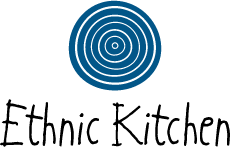
Aiste, New York: for me, Lithuania is a heart
On July 6th, in honor of the crowning of King Mindaugas, Pasaulio virtuve’s three team members hit the streets of Vilnius to collect an archive of what Lithuania meant to various passerbys (whether locals or visitors). We asked each individual to draw a picture of what their impression of the country was.
In whatever language my co-worker could impressively get by (“Hi! English? Lithuanian? Russian? German?” – yes, even German), about 35 people took on the task of pictorial depictions on that fine, sunny, Sunday afternoon.
The entire process was pretty simple, and went something like this: ask the passerby if they wanted to participate, get them to draw, photograph them with the drawing, and then have them fill out a contact form/hand them flyers about the project. What was interesting is that several people were hesitant to participate because they “did not know how to draw well,” or, “did not photograph well.”
I find the diversion from the ideological subtext of this particular project – impressions of Lithuania and their significances – based on feeling inapt at a particular “skill” (drawing, or being photogenic) somewhat unfortunate. Obviously this is not a definitive observation of humanity, but I think that the hesitance is indicative of a culture which obsessively distinguishes between “professional” and “amateur,” and therefore not necessarily give credit to those who are indeed proficient in a capability to do something.
In any case, our “street stunt” ran very smoothly. Only two people chose not to participate, and most everyone was willing to, and lovely about, contributing to our project. It was inspiring to break down the wall that often exists amongst strangers. The communication with people you normally wouldn’t necessarily provided a more intimate experience with the city.
As you spoke with Vilnius’ visitors and inhabitants, you noticed small details about them that normally you didn’t: piercings, certain bracelets, holes in tights. The sensation of connecting with strangers was epitomized later on when I would run into people that the team had photographed, and we would mutually acknowledge each other, with smiles and all (shout out to Agata! Two times in one week, nice).
A majority of the drawings themselves were iconic images, especially for people visiting (Gedimino Pilis was a definite go-to). It’s interesting to think of immediate representations of countries as a collection of recognizable images, as opposed to subtextual significances – a lot of times it’s easy to connect images and places without necessarily knowing what those images represent.
I know that personally, I identified Lithuania with the Gelezinis Vilkas, Gedimino stulpai, and the Vytis, and for the longest time did not know the stories of each. It was nice to see the drawings that veered from such.
There were some that gave more insight to the relationship between the drawer and the country: a house, for example, or a bonfire under a summer sky. Drawings that implied experience was comforting. It solidified connection between Lithuanians and Lithuania – which is often a media subject which stresses the lack of such, through emphasis on massive emigration, age gaps, and economic discrepancies between LT and other countries.
As a twenty year old whose family of Lithuanian decent raised her in New York, I think that if someone asked me to draw what Lithuania meant to me, I would draw a huge cloud of scribbles. That is not to say that I see darkness in these winding pastel-colored streets, but rather, to articulate what Lithuania means to a “Lithuanian-American” – to even define a “Lithuanian-American” – is not removed from abstraction.
The representation of a country to a person who “comes” from it – is rooted in it – and in that same logic displaced from it, is not an easy drawing of an iconic symbol of the place.
I personally think that Lithuania in itself is immensely complex, and at its age of 24, couldn’t perfectly draw what it means to itself. In that sense my time here (~ 5 weeks) has had a weirdly comforting undertone: here I am, trying to figure out myself in a place, which is also trying to figure out itself.
I think at least one of images you could make out in all the scribbles and abstractions of both me and Lithuania’s hypothetical drawing would be that of a heart – a quiet love for the country and the seeds of hope already in blossom. This particular outreach initiative was an inspiring way to feel and see that love, in the collective scribble of each individual passerby’s piece. Long live King Mindaugas!
– Aiste Blaudziunaite
Intern at Pasaulio virtuve, 2014
More pictures at https://www.facebook.com/pasauliovirtuve?fref=tsp









